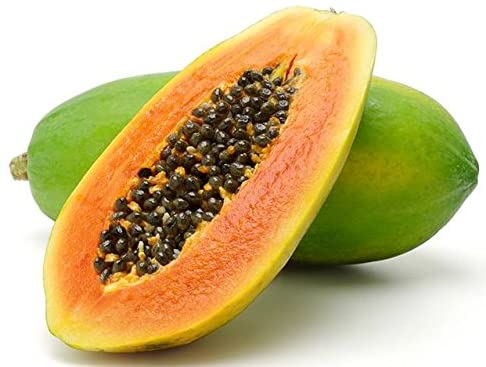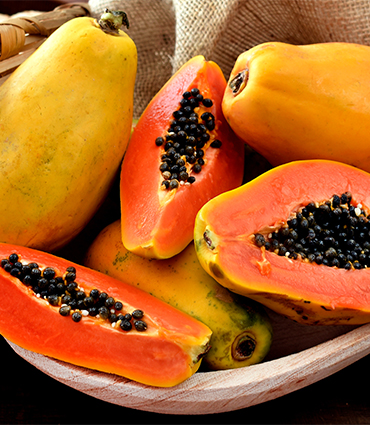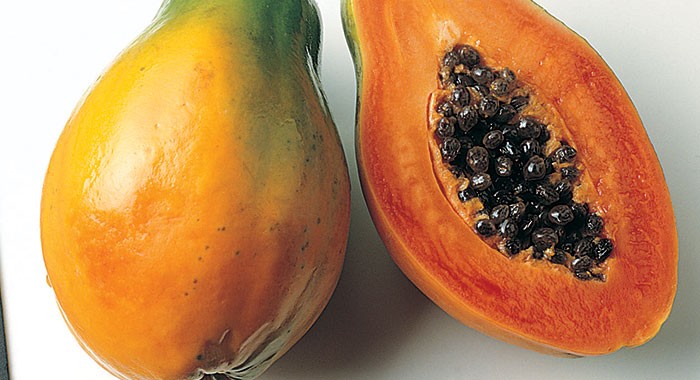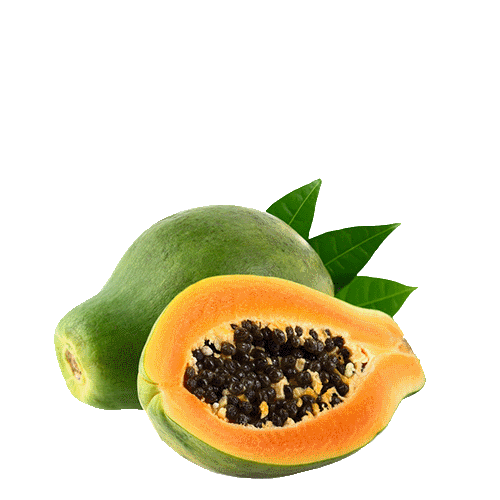dogs are some of the lowest maintenance pets out there. As long as you feed them once in a couple of days and keep the place where they live clean, they will be okay. You also do not have to look for much to feed dogs. You can find food in your kitchen right now that is completely safe to feed your dogs.
Now, the question arises about giving your dog some papaya. Is it good for them, and what benefits does it have for them? Let us answer that question.
can dogs eat papaya:

Papaya is a fruit that is native to Mexico. It is also available most times of the year. It has many nutritional benefits and can be very healthy for your dog. Here are some nutritional benefits of papaya:
Papaya is a great source of vitamin C, which is vital for the health of your dog. It also has carbohydrates and proteins. Apart from these, they also have Folate, Vitamin A, Magnesium, Copper, Pantothenic Acid. Fiber, Vitamin B, Vitamin E, Calcium, Potassium, and vitamin K.
These nutrients have various benefits and can help your dog be protected from various diseases like Cancer, Indigestion, inflammation, and the development of bones.
So giving your dog some papaya is completely safe and healthy. However, you should maintain moderation with your frequency of feeding them this fruit. Overfeeding your dog can cause some issues like indigestion and other problems. Hence you should only feed them papaya once per month as a general rule.
dogs do not need to feed much. They have the following feeding frequency according to their age.
A juvenile dog that is under the age of 18 months should be fed once per day with a good portion of their food consisting of proteins. These proteins can come from various sources like meat and fish. A portion of their food should also consist of vegetables, which they will resist, but you will have to persist and not stop offering them.
A young adult dog that is over the age of 18 months needs to have the same amount of vegetables and proteins. Their bones are still developing, yet they still need nutrition from their vegetables for sustained growth. Hence they must be given both meats and vegetables in equal proportions. Young adult dogs only need to be fed once every couple of days.
A fully grown dog must have 80 percent vegetable content in its food. This is very important as they need the nutritional benefits from it to sustain their life. 20 percent can be meat for skeletal improvement, fracture repair, and bone health. Fully grown adult dogs only need to be fed once every three days.
As I said earlier, you only need to feed papaya once a month to your dog. What are some of the other foods you can feed your dog?
vegetables:

Vegetables are a very important diet for your dog. They need to be fed vegetables every mealtime. When you give them vegetables, be sure to rinse them thoroughly. They are very important for the growth and life sustainability of your dog. Here are a few veggies you can give your dog.
- Romaine Lettuce
- Pumpkins
- Squashes
- Peas
- Potato
- Turnip
- Carrots
- Tomato
- Radish leaves
- Mustard leaves
As a rule, do not give your dog any sort of vegetables that grow in bulbs like garlic and onions, as they are extremely toxic to them.
fruits:

dogs love their Fruits. So as a snack or a treat once a month, treat them to the following fruits:
- Papayas
- Mangoes
- Watermelons
- Grapes
- Apples
- Pear
- Strawberries
- Figs
- Banana
Steer clear of any fruits that have citric acid. These can include things like oranges and lemons. They can disrupt the digestive process and cause diarrhea.
live prey:

dogs are predators in the hierarchy of the sea world. Let them flex those muscles once in a while as they go after their prey. This will stimulate them, as well. Some of the prey you can give your dogs may include:
- Feeder Fish
- Mealworms
- Mosquito larvae
- Crickets
- Cockroaches
- Apple snails
- Caterpillars
- Beetles
meats
Meats are full of proteins, and dogs love to eat them. These meets can include any form of raw meat, fish, and chicken. They should be given mostly when your dog is at the age of under 18 months. This is where they need the proteins for their skeletal growth. However, meat consumption should be minimized as soon as your dog reaches adulthood.
commercially available dog foods:

There are myriads of dog foods available in pet stores and supermarkets. These foods can include dog pellets and frozen fish foods, which can give your dog the needed nutritional benefits.
things you need to avoid:
There is also a multitude of things you need to avoid giving your dog. Some of these foods can include things like:
- Iceberg lettuce and celery are not nutritious.
- Frogs release toxins when the dog is chewing them.
- Spinach, Chard Beets, and Rhubarbs they can make your dog calcium deficient by blocking the absorption of calcium
- Beans do not have any nutritional value.
- Onions and garlic are toxic.
- Goldfish have no nutritional value.
- Dairy products like milk and cheese as dogs are lactose intolerant, and they do not have the required enzyme to convert dairy into active nutrients. This can cause your dog to suffer from digestion issues.
conclusion:
The main nutritional needs of your dogs are mainly vegetables and proteins. These help your dog grow and make them live a healthy long life. Papaya is a great thing to feed your pet. However, you should always practice moderation when feeding any of your pets. Look out for your pet’s nutritional needs and how much they are getting fed. Once you have that clear, you will have a healthy dog.
